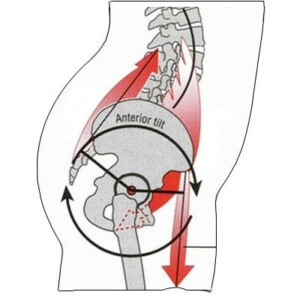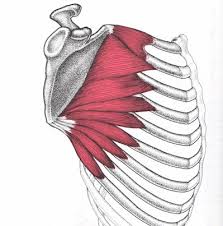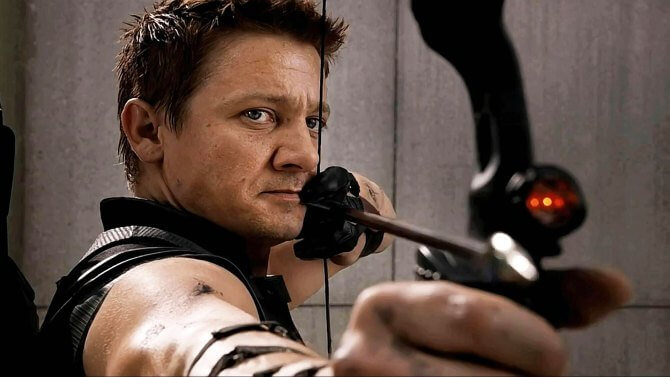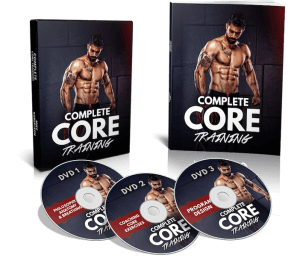(Lead photo courtesy of Flickr)
As you may or may not know, I’ve gone through something of a Marvel obsession that past couple of months.
Whether it’s the big Avengers roll-outs, the solo movies, or even the Netflix series’ like Daredevil and Jessica Jones, I’ve pretty much seen all of their recent work in the last two months.
Now this may come as a surprise, but one of my favorite characters in the movies is Hawkeye.
Hawkeye doesn’t get a lot of publicity, because, well he doesn’t seem all that amazing at first glance.
After all, the Hulk changes colors, develops super strength, and smashes everything in sight.
Ironman has a virtually impenetrable suit that allows him to fly around and shoot repulsor blasts out of his hands.
And Thor? Well, he’s basically a god and wields a hammer that no one else can lift!
So why is Hawkeye cool?
First off, he seems like a pretty normal bro. Plus he’s a dad, so he’s got that going for him as well.
But perhaps most importantly he makes up for his lack of super-herodom with a ridiculous toolbox and skillset.
If you check this page out, Hawkeye has an arrow to deal with just about any situation. And here’s where this actually applies to you with regards to coaching and training.
…as coaches, cues are like our arrows, and we need an arrow (cue) to fix a lot of different issues!
When it comes to coaching and cuing, though, what you often find is that you need the same cue time and time again.
After all, how many times does Hawkeye bust out the Bola Arrow?
Probably not all that often.
But the explosive tip arrow? Well, that probably gets used quite a bit.
So let’s chat about the cues that I use as a coach most frequently, as well as why I feel they’re valuable.
But First, a Bit of Background…
Whether you train elite athletes, stay-at-home moms, or retired old people, we are dealing with a society of extended bros and broettes.
Now this doesn’t mean that every single person moves the same way, compensates the same way, or even breaks down in the same areas.
That’s simply not true.
However, when you break things down you start to realize that the same basic movement flaws come up, time and again.
On exercises like squats and deadlifts, athletes have a tendency to arch their back to create stability and control through the lumbar spine and pelvis.
In an exercise like a push-up, they may not have the flexibility to truly reach, and open up the upper back.
And of course, when it comes to core training, they simply can’t get into the right position from the get go!
To remedy all this, I’m going to give you something today that I feel is incredibly valuable:
After almost 16 years of training and coaching, here are the five cues I probably use the most in the gym, as well as why I use them.
Whether you are a trainer, coach, or just someone who likes to lift weights, I hope they help you get more out of your training!
Cue #1 – Unlock the Knees
In the sport of powerlifting, one of the first things you have to do on a squat to demonstrate that you “own” the weight is lock your knees out.
Similarly, when deadlifting, you lock the knees out at the top to demonstrate that you have “completed” the lift.
But who ever said we were creating powerlifters?
Not taking anything away from the sport of powerlifting, but for my clients/athletes, the goal is optimal and efficient movement, first and foremost.
When setting up for a squat and/or deadlift, one of the first things I have my athletes do is unlock their knees slightly.
Here’s why this works, but it’s going to take two-seconds of effort on your part.
Stand up from wherever you’re reading this, and lock your knees out as hard as you can.
What happened at your hips, spine and pelvis?
There’s a simple lesson here – our joints work in opposing fashions up and down the kinetic chain.
 So when you extend your knees, the following happens:
So when you extend your knees, the following happens:
- You flex the hip,
- You anteriorly tilt the pelvis, and
- You extend/arch the lower back.
Does this posture/position sound familiar to anyone?
I can’t tell you how many of my athletes come in with hyperextended knees, an anterior tilt, and an overly extended lower back.
So by unlocking the knees prior to set-up, the following occurs:
- You extend the hip,
- You allow the pelvis to come back and underneath the thorax, and
- You allow the the lower back to come back to a more neutral posture/alignment.
Pretty cool, eh?
This one little cue allows us to optimize position of our pelvis, thorax and spine. But the real magic happens when this cue and the next are put together…
Cue #2 – Feel the Whole Foot
When you have an extended athlete, another common issue is that they start to lose sensation of their whole foot.
Instead of being able to get that tripod feeling that we often discuss, these athletes are often throw so far forward that they lose the sensation of where their heels are at in space.
What we’re really talking about here isn’t just a foot sensation, though. What we’re really talking about is someone that is struggling to own their center of gravity (COG).
Most athletes attempt to stay vertical by creating extension throughout their system, where they can use joint compression (and/or impingement) to stabilize.
When we cue an athlete to unlock their knees and then feel their whole foot, you see them better understand where their body should be in space.
Instead of living on that ski slope (like they have for the last X number of years), now they start to realize that to truly own their center of gravity, they have to feel their whole foot, instead of just the front or back.
In the initial sessions I’ll start easy cuing them to “feel the whole foot from front to back.” Doing this allows us to start addressing the sagittal plane first.
Once there, we can get more fancy and talk about tripod foot, the quarters cue, etc.
Here’s the real key, though: Once they can feel their whole foot at the beginning of the lift, that’s awesome. But they’re not done yet, either.
Whether we’re talking about a squat or deadlift variation, the next level in feeling the whole foot is to be able to feel it from start-to-finish while lifting!
One of the most challenging examples of this is the RDL. Unlocking the knees and feeling the whole foot at the start is typically pretty easy.
But can the athlete feel the whole foot at the bottom position of the RDL?
Can they maintain both heel and midfoot contact?
For many, this is a tough thing to negotiate. Feeling both the front and back of the foot in the bottom of an RDL (or squat for that matter), is quite challenging.
However, if you can get your athletes to feel that whole foot throughout the full range of motion, that sets the stage for the final cue, which is where the real magic happens…
Cue #3 – PUSH
How many times have you seen an athlete who is powering out of the bottom of a squat or deadlift, and the following occurs:
- The hips shoot up fast relative to the knees,
- The head and neck snap back, looking up towards the ceiling, and
- They are forced to power through the lift using mostly their quads and lower back?
If you’ve spent any time in the game, this has probably happened more times than you care to remember.
Look, big weights are big weights. If you’re a competitive powerlifter or Olympic lifter, then you’re going to have some lifts that look like this, and I’m okay with that.
But I think athletes need to be using the weight room as a tool to improve efficiency and athleticism, not simply push as much weight as possible.
If you unlock their knees at the start…
…and if you get them to feel their whole foot throughout…
…when it comes time to move the weight, the only cue you should need is PUSH.
Pushing is what we want our athletes to do, whether it’s lifting heavy things, driving a guy off the line in football/wrestling, or planting and cutting in basketball/volleyball/tennis.
If you can PUSH, that means you’ve maintained that great relationship between your thorax/spine/pelvis, which not only optimizes efficiency, but keeps you healthier over the long haul as well.
I’m telling you, if you can link these three cues together with your athletes, the changes in their movement quality are going to be immediate and noticeable.
But what other areas do we need to address?
Cue #4 – Exhale and Get Abs
Let’s shift gears just a bit, as the majority of the article up to this point has focued on lower body work.
When it comes to the body, I’m still a huge believer that the core is not only the centerpiece, but an area that we must address if we want to make movement as efficient as possible.
However, if we’re rolling around in this extended or “scissored” posture, with the lower rib cage flared and the pelvis tipping forward, then this must be addressed first.
If we’re keeping it 100 around here (which I always am), then I have to admit that I missed the boat on this for quite some time.
Sure, I was giving the right exercises, focusing on preventing motion versus creating it, etc., but I missed arguably the most important part of all this.
The set-up.
Quite simply, you could be giving all of the best exercises in the world, but if your athletes aren’t in the right starting position, they’re not going to get the most out of the exercises you prescribe.
To address this, one simple cue will cure a lot of what ails ya:
Exhale fully, and find your abs.
When you exhale fully, you restore better position of both the ribcage and the pelvis.
Instead of that massively scissored posture that most athletes hang out in, now we’ve restored a more optimal resting posture, where the thorax/diaphragm are facing down, and the pelvis/pelvic floor are facing up.
Now take that incredibly simple cue and use it on every single ab exercise you know.
You can thank me later!
(And if you want more info on this, you should probably check out my Complete Core Training DVD’s and manual).
Cue #5 – REACH
Last but not least, I was a huge believer early in my career that you needed structural balance to stay healthy.
So if you’re going to bench press, well, you need to do a ton of the opposite movement (i.e. rowing) to keep your shoulders healthy.
The issue with this appraoch is three-fold:
- A row is not the opposite of a bench press,
- A bench press isn’t a true “reaching” exercise, and
- We were looking solely at the shoulder joint, and not the thorax as a whole!
That extension that we’re talking about isn’t focused solely on the lower body, core and pelvis – it manifests itself all the way up the kinetic chain.
An athlete that is very extended will not only have an anterior pelvic tilt and big lumbar lordosis, but often a flat or extended thoracic spine as well!
This athlete will struggle to open up the back side of his ribcage, due to stiffness, inflexibility and poor airflow into this area.
 To remedy this, one of my favorite tools are exercises that force an athlete to reach.
To remedy this, one of my favorite tools are exercises that force an athlete to reach.
Include more push-ups in the programming.
Throw in some landmine and cable pressing.
Basically, anything you can think of that forces your client to reach long and open up the backside of their body is going to be a game changer for them.
What’s been cool is that the past couple of months, I’ve had a handful of online clients come to me with various neck and shoulder ailments.
And while the programming is comprehensive in addressing their dysfunctions, it’s been cool to see these clients who have suffered from chronic pain and/or injuries become virtually asymptomatic in a few weeks given the right exercises and cues.
Quite simply, if you aren’t cuing your clients and athletes to reach, you need to start doing this TODAY.
The results will be huge, I promise.
Summary
When you’re starting out as a coach, I can’t recommend strongly enough to snag as many coaching cues as possible.
Like Hawkeye, you never know when you’re going to need that one specific cue for that one specific client.
But as you mature and refine your game, make it a goal to whittle your cues down to the ones that maximize efficiency and performance.
After all, you only need to use that Bola Arrow every now and again!
All the best
MR


